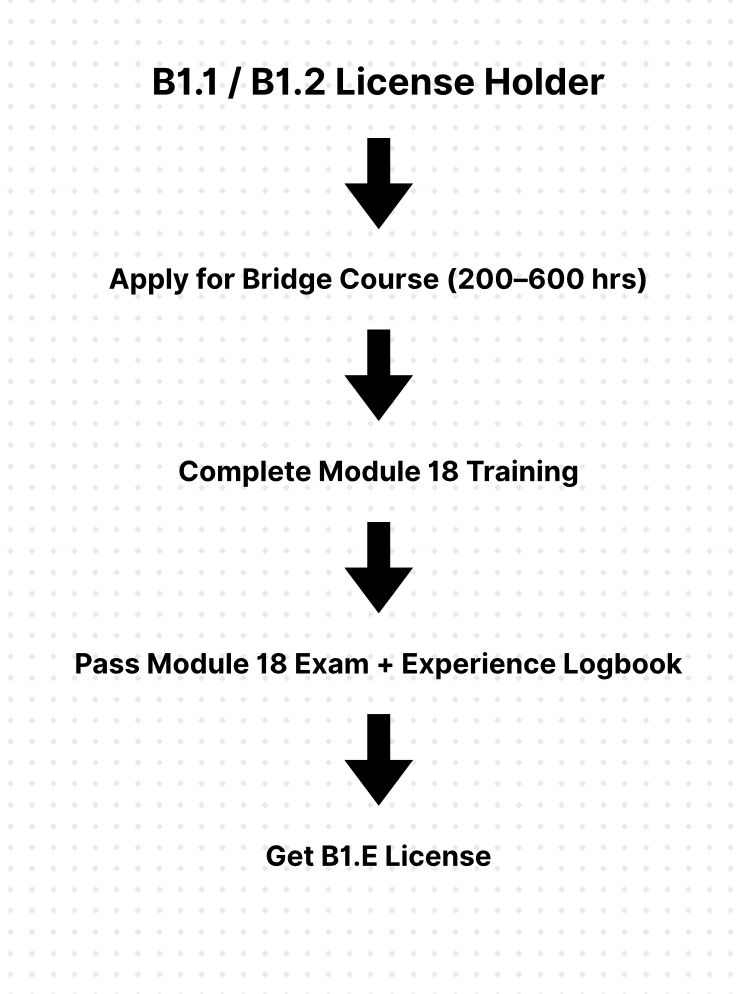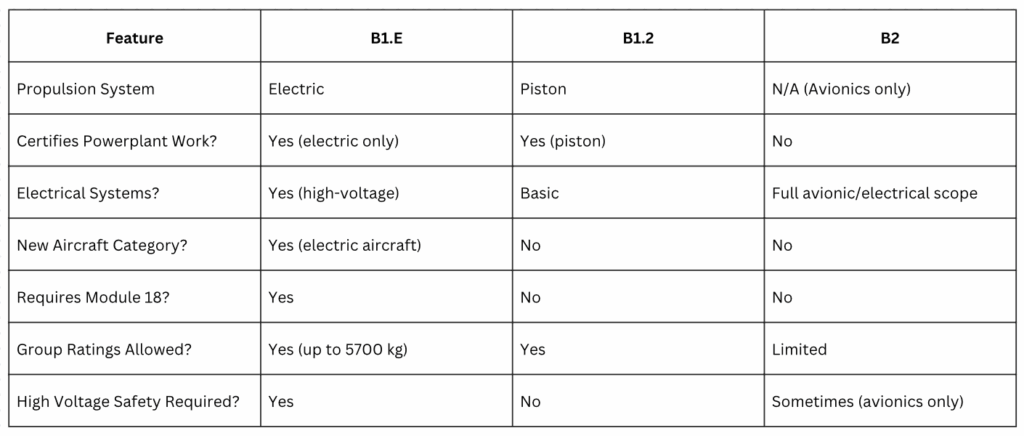- Flat 2, "Merill Court "Fuxa Street 1308 San Ġwann, Malta
Introduction: The Dawn of Electric Aviation Certification
The aviation industry is undergoing a transformative shift toward sustainability, with zero-emission propulsion at the forefront of this revolution. Recognizing this paradigm shift, the European Union Aviation Safety Agency (EASA) has implemented Commission Regulation (EU) 2025/111, introducing the B1.E license – a pioneering certification specifically designed for maintenance engineers working on battery-powered aircraft under 5,700 kg MTOM (Maximum Take-Off Mass).
This comprehensive guide explores everything current maintenance professionals and aspiring engineers need to know about this groundbreaking certification pathway that bridges the regulatory gap between traditional B1.1 (turbine) and B1.2 (piston) categories.
Understanding the B1.E License: A New Frontier in Aviation Maintenance
What Exactly Is the B1.E License?
The B1.E license represents a strategic expansion of the established B1 family of certifying staff licenses. Unlike its conventional counterparts, it focuses exclusively on electrified airframes and battery-electric propulsion systems, addressing a critical regulatory void that previously left electric aircraft maintenance certification in a gray area.
This specialized license authorizes engineers to:
- Perform comprehensive maintenance on electric aircraft powerplant systems
- Certify work on electric motors and their control systems
- Maintain high-voltage components and safety systems
- Service battery arrays and energy storage systems
- Execute power management and distribution maintenance
The B1.E license serves as the regulatory foundation for the maintenance ecosystem supporting urban air mobility vehicles, electric general aviation aircraft, and the next generation of sustainable regional aircraft, such as the Pipistrel Velis Electro – the first type-certified electric aircraft – and experimental programs like Rolls-Royce’s ACCEL project.
Eligibility and Target Professionals
The B1.E certification pathway is accessible to several categories of maintenance professionals:
- Experienced Technicians: Current B1.1 or B1.2 license holders seeking to expand their expertise into electric aviation
- New Entrants: Students beginning their aviation maintenance career with a focus on sustainable technology
- Career Transitioners: Professionals from adjacent technical fields (automotive electric systems, renewable energy, etc.) looking to enter aviation maintenance
- Forward-Looking Experts: Established aviation engineers preparing for the industry’s electric transformation
This license is particularly valuable for those positioned at the intersection of aviation maintenance and sustainable transportation technologies.
Visual Guide: How to Transition from B1.1/B1.2 to B1.E

B1.E vs. B1.2 vs. B2: Quick Comparison Table

Technical Knowledge Requirements: Module 18 and Beyond
Core Curriculum: The Electric Powerplant Module
At the heart of the B1.E certification is the newly developed Module 18: Electric Powerplant. This specialized curriculum goes beyond traditional aviation systems knowledge to provide comprehensive coverage of: Fundamental Electric Propulsion Concepts
- Energy density considerations and performance limitations
- Power-to-weight ratios in aviation applications
- Efficiency comparisons with conventional powerplants
Electric Motor Technologies
- Direct Current (DC) motors and their applications
- Brushless permanent magnet motors – construction and maintenance
- AC synchronous and asynchronous motor systems
- Cooling systems and thermal management
Aviation Battery Systems
- Lithium-ion technology and chemistry variants
- Hydrogen fuel cell integration and maintenance
- Battery monitoring systems (BMS)
- Thermal runaway prevention and containment
- State-of-charge and state-of-health diagnostics
High-Voltage Safety Protocols
- Lockout/tagout procedures for electric aircraft
- Personal protective equipment requirements
- Isolation verification techniques
- Emergency response procedures
Power Electronics
- Inverter and rectifier maintenance
- DC-DC converter systems
- Regenerative braking and energy recovery systems
- Signal filtering and electromagnetic compatibility
Control Systems
- Motor controller architecture and diagnostics
- Power management algorithms and firmware
- System fault isolation and troubleshooting
- Software version control and updates
Lifecycle Management
- Battery degradation assessment
- Cell balancing and replacement procedures
- Refurbishment vs. replacement decision-making
- End-of-life considerations and recycling
Module 18 Examination Structure
The Module 18 examination is rigorous and comprehensive:
- Format: 76 multiple-choice questions
- Duration: 95 minutes
- Passing Score: 75% minimum
- Content Balance: Theory (40%), practical applications (60%)
This examination ensures that certified engineers possess both theoretical understanding and practical problem-solving abilities for electric aircraft systems.
Experience Requirements: Balancing Theory and Practice
To qualify for the B1.E license, candidates must demonstrate substantial practical experience:
Experience Pathways

Currency Requirements
All applicants must demonstrate recent relevant experience:
- Minimum of 6 months working on aircraft systems within the last 24 months
- At least 3 months specifically on electric propulsion components
Transitional Arrangements for Current License Holders
For existing B1.1 and B1.2 license holders, EASA has established bridge courses to facilitate the transition to B1.E:
- B1.1 to B1.E: Approximately 200-400 hours focused on electric powerplant specifics
- B1.2 to B1.E: Approximately 300-600 hours covering both electronic systems and electric propulsion
These bridge programs recognize transferable skills while ensuring adequate training on the unique aspects of electric aircraft maintenance.
Examination and Assessment Framework
Candidates must successfully complete a comprehensive examination regime covering:
Standard Part-66 Modules
- Mathematics and physics foundations
- Electrical fundamentals and digital techniques
- Materials and aircraft structures
- Standard maintenance practices
- Aerodynamics and human factors
Specialized Electric Aircraft Content
- The dedicated Module 18 examination
- Practical assessments demonstrating safe handling of high-voltage systems
- Troubleshooting scenarios specific to electric propulsion
The assessment framework ensures that B1.E license holders can safely and effectively maintain electric aircraft with the same rigor expected for conventional aircraft.
Type Rating and Group Endorsements
One of the most significant advantages of the B1.E license is its flexible approach to type ratings:
Group Ratings System
For most electric aircraft under 5,700 kg MTOM, the B1.E license enables group ratings—a practical approach that allows engineers to maintain multiple similar aircraft without requiring individual type endorsements for each model. This system recognizes the relative standardization among smaller electric aircraft designs.
Type-Specific Requirements
Certain aircraft still require dedicated type training:
- Complex electric aircraft with advanced systems
- Hybrid-electric designs with multiple power sources
- Electric VTOLs (Vertical Take-Off and Landing) with unique configurations
- Aircraft above certain complexity thresholds defined by EASA
Type Training Specifications
When required, type training follows these guidelines:
- Theoretical Component: Minimum 60 hours for aircraft ≤ 5,700 kg
- Practical Component: Hands-on training with actual aircraft or high-fidelity simulators
- Assessment: Combination of written examinations and practical demonstrations
Transitional Provisions (Valid Until February 2028)
EASA has implemented a transitional arrangement to support the industry’s evolution:
Current B1.1 or B1.2 license holders may obtain type endorsements for electric aircraft without completing the full B1.E qualification, provided:
- They have at least one previous type rating
- They complete manufacturer-specific training on the electric aircraft
- They demonstrate recent relevant experience in aircraft maintenance
- They pass specific assessments on electric propulsion systems
This provision allows the industry to build capacity while the full B1.E licensing pathway matures.
Strategic Career Implications
The B1.E license represents more than just regulatory compliance—it positions maintenance engineers at the forefront of aviation’s sustainable future:
Industry Growth Projections
- The electric aviation market is projected to grow at a CAGR of over 15% through 2030
- Urban Air Mobility platforms alone are expected to create thousands of maintenance positions
- Early adopters of B1.E certification will have competitive advantages in this emerging sector
Career Diversification Benefits
- Expanded employment opportunities across conventional and electric aviation
- Transferable skills applicable to adjacent industries (electric vehicles, renewable energy)
- Positioning for leadership roles as organizations transition to sustainable operations
Continuing Professional Development
Maintaining B1.E currency will require:
- Regular updates on battery technology advancements
- Familiarity with evolving power electronics
- Understanding of emerging sustainable aviation fuels and hybrid systems
Preparing for Your B1.E License
Recommended Preparation Strategies
- Foundational Knowledge:Review electrical engineering principlesStudy battery technology fundamentalsUnderstand power electronics basics
- Specialized Training:Enroll in Module 18 preparatory coursesSeek hands-on experience with electric propulsion systemsComplete high-voltage safety training
- Experience Documentation:Maintain detailed records of all electric systems maintenanceSecure supervisor verification of relevant tasksDocument troubleshooting and problem-solving experiences
- Examination Preparation:Practice with sample Module 18 questionsReview technical documentation for electric aircraftStudy manufacturer maintenance manuals for electric propulsion systems
Resources and Support
Many aviation training organizations are developing specialized programs to support B1.E candidates:
- Dedicated Module 18 study materials
- Electric aircraft systems simulators
- High-voltage safety laboratories
- Instructor-led courses by industry experts
Conclusion: Powering Your Future in Aviation Maintenance
The B1.E license represents a pivotal evolution in aviation maintenance certification, aligning regulatory frameworks with the industry’s electric future. For maintenance professionals at all career stages, this new pathway offers both challenge and opportunity.
By investing in this specialized knowledge now, engineers position themselves at the forefront of sustainable aviation—a sector poised for exponential growth as the industry pursues its net-zero carbon emissions targets.
Whether you’re a seasoned maintenance professional or just beginning your aviation career, the B1.E license offers a direct route to participation in one of the most exciting transformations in aviation history. The journey toward electric aviation maintenance expertise begins today.

